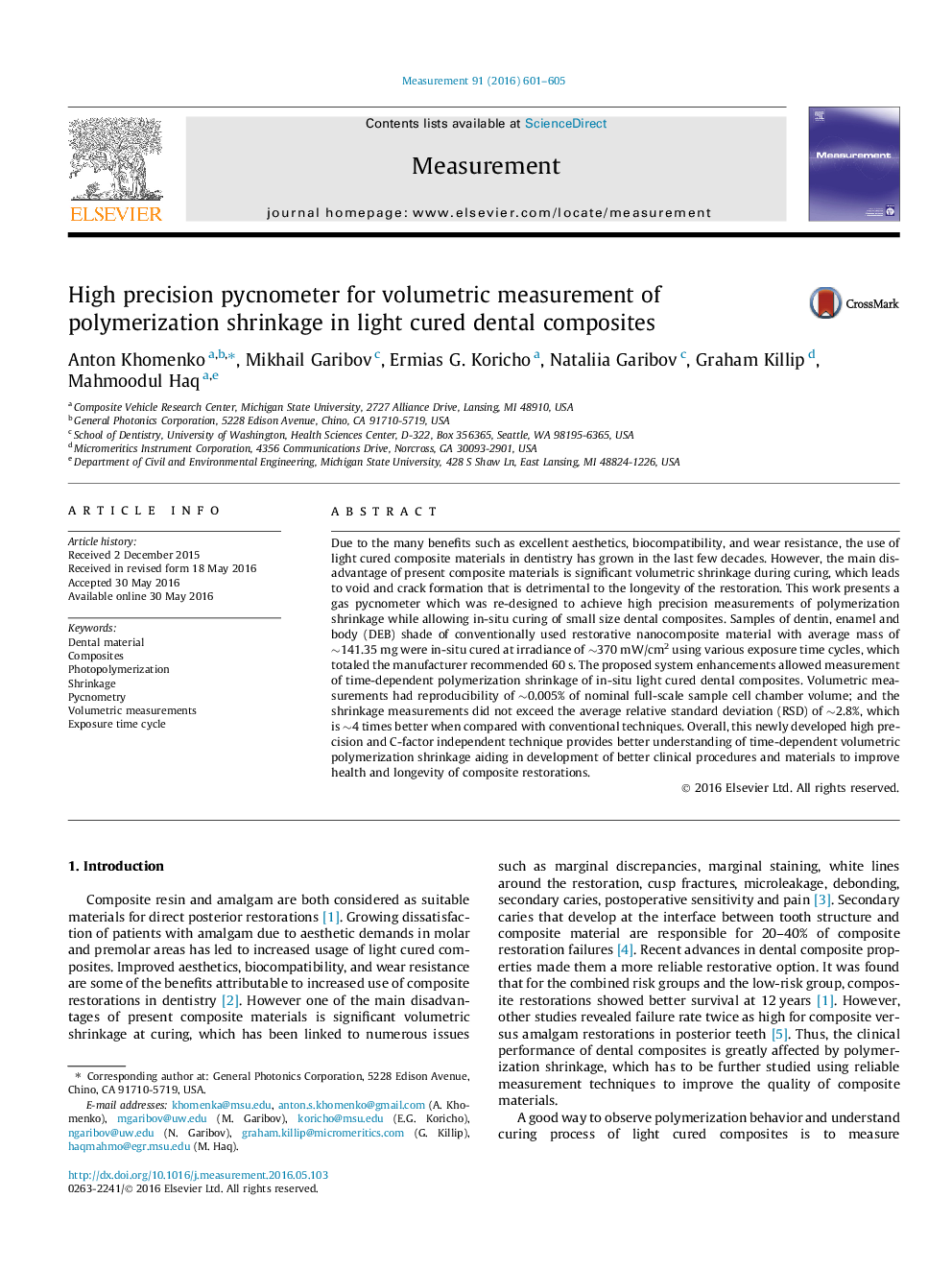| کد مقاله | کد نشریه | سال انتشار | مقاله انگلیسی | نسخه تمام متن |
|---|---|---|---|---|
| 729706 | 1461496 | 2016 | 5 صفحه PDF | دانلود رایگان |
• Volume of in-situ cured dental composites was obtained by re-designed pycnometer.
• Reproducibility was 0.005% of nominal full-scale sample cell chamber volume.
• Average volumetric measurements RSD was ∼0.027%.
• Volumetric shrinkage measurements average SD was ∼0.05%, RSD was ∼2.8%.
• Exposure time cycle did not have notable impact on the time-dependent shrinkage.
Due to the many benefits such as excellent aesthetics, biocompatibility, and wear resistance, the use of light cured composite materials in dentistry has grown in the last few decades. However, the main disadvantage of present composite materials is significant volumetric shrinkage during curing, which leads to void and crack formation that is detrimental to the longevity of the restoration. This work presents a gas pycnometer which was re-designed to achieve high precision measurements of polymerization shrinkage while allowing in-situ curing of small size dental composites. Samples of dentin, enamel and body (DEB) shade of conventionally used restorative nanocomposite material with average mass of ∼141.35 mg were in-situ cured at irradiance of ∼370 mW/cm2 using various exposure time cycles, which totaled the manufacturer recommended 60 s. The proposed system enhancements allowed measurement of time-dependent polymerization shrinkage of in-situ light cured dental composites. Volumetric measurements had reproducibility of ∼0.005% of nominal full-scale sample cell chamber volume; and the shrinkage measurements did not exceed the average relative standard deviation (RSD) of ∼2.8%, which is ∼4 times better when compared with conventional techniques. Overall, this newly developed high precision and C-factor independent technique provides better understanding of time-dependent volumetric polymerization shrinkage aiding in development of better clinical procedures and materials to improve health and longevity of composite restorations.
Figure optionsDownload as PowerPoint slide
Journal: Measurement - Volume 91, September 2016, Pages 601–605
